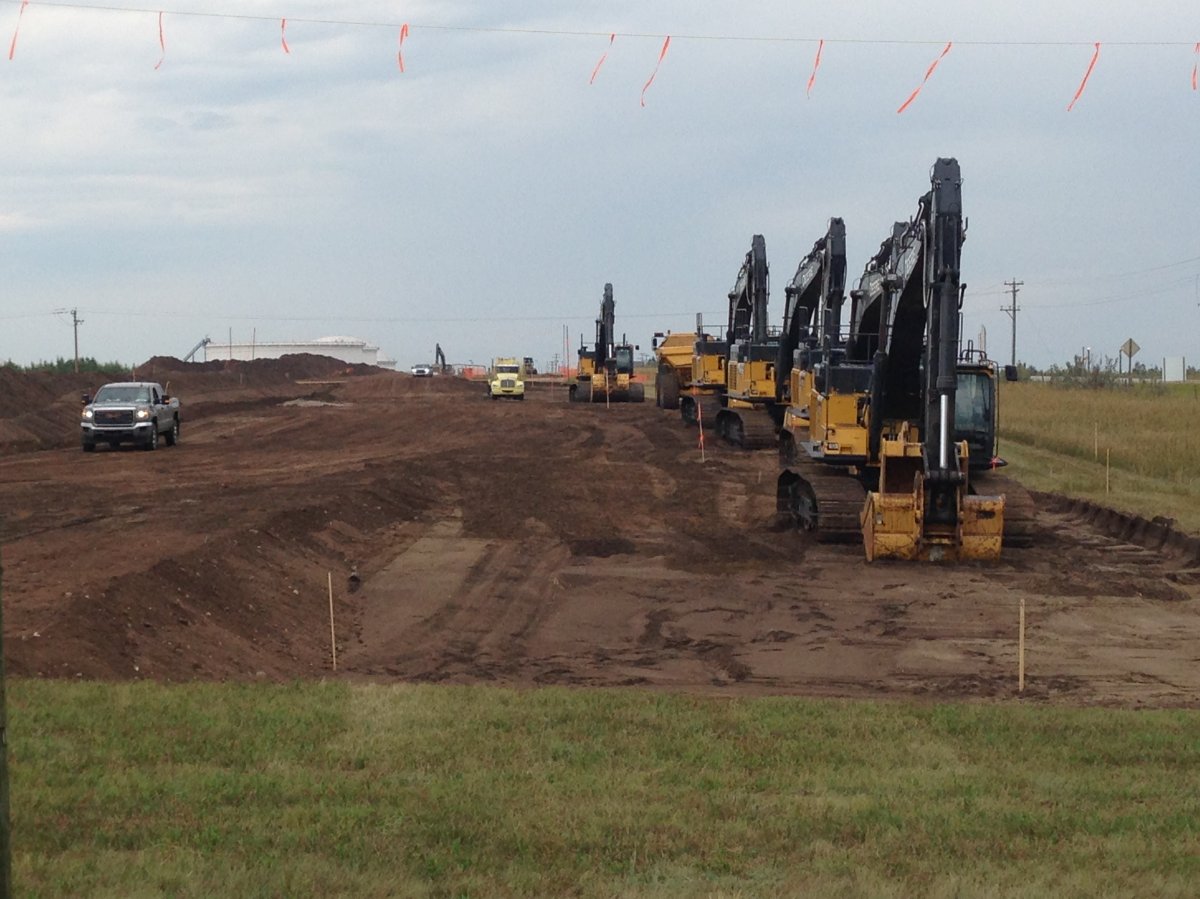Minnesota’s Public Utilities Commission has approved Enbridge Energy’s proposal for replacing a deteriorating oil pipeline despite strong opposition from some Indigenous people and climate change activists. But a major question — the line’s route — has yet to be settled, and the fight will likely end up in court.

READ MORE: Minnesota regulators approve Enbridge Line 3 project
Here are some questions and answers about the pipeline and what happens next:
Why does Enbridge say Line 3 needs replacing?
The Line 3 pipeline was built in the 1960s, and runs 1,765 kilometres from Edmonton across North Dakota and Minnesota to Enbridge Energy’s terminal in Superior, Wis. The Calgary-based company says the line needs replacing because it’s increasingly subject to corrosion and cracking . The replaced section would run 1,660 kilometres from Hardisty, Alta. to Superior.
Enbridge currently runs Line 3 at about half its original capacity of 760,000 barrels per day for safety reasons and uses it only to carry light crude.
Enbridge has already replaced the short segment of Line 3 in Wisconsin and put it into service. Construction is underway on the short segment across northeastern North Dakota and on the longer section from Alberta to the U.S. border. Enbridge estimated the overall cost of the project at $7.5 billion, including $2.6 billion for the U.S. Segment.
Watch below: In August 2017, Kent Morrison filed this report about the Line 3 replacement project and the optimism it is generating in Alberta.

Who opposes the project?
Climate change and tribal activists teamed up to fight the project because the replacement line would carry Canadian oilsands oil, which generates more greenhouse gases in the production process than lighter crude. They say it risks oil spills in pristine areas of the Mississippi River headwaters region of northern Minnesota where Indigenous people harvest wild rice, fish, hunt and claim treaty rights. Ojibwe people, many of whom prefer the name Anishinaabe, consider wild rice sacred and central to their culture.
The opponents also contend that the country doesn’t need the oil as it transitions to cleaner energy, saying much of the additional oil moving through the pipeline would eventually get shipped to the Gulf Coast for overseas buyers.
READ MORE: Religious leaders in Minnesota oppose Enbridge’s proposed Line 3 pipeline project
Enbridge and its customers strongly disputed the lack of need in the region. They said Line 3’s reduced capacity is forcing the company to severely ration space on its pipeline network, and that failure to restore its capacity would force oil shippers to rely more on trains and trucks, which are more expensive and less safe.
What were the route choices?
The company’s preferred route is a 542-kilometre path that runs south of the current 454-kilometre route for much of its course across Minnesota, mostly along existing pipeline or powerline rights of way. It avoids two Indigenous reservations crossed by the current line where there is strong opposition to both the proposed and existing routes.
An administrative law judge recommended earlier that the replacement, if approved, should follow the existing route in the existing trench. Enbridge says that’s unworkable. The Leech Lake Band of Ojibwe has adamantly rejected allowing the replacement to be built on its land. And Enbridge says it would also have to take Line 3 out of service for 16 months during construction.
The Public Utilities Commission also considered some other alternatives that had little to no support from the parties, including a much more southerly 636-kilometre route that avoids the Mississippi River headwaters and lakes region by looping south of Mille Lacs Lake before heading back north toward Superior, Wis. Climate change activists oppose all the alternatives because they want the tar sands oil to stay in the ground.
What is the public utilities commission?
The five-member commission is an independent body that regulates utilities and pipelines. Commissioners serve staggered six-year terms. Its current members were all appointed by Democratic Gov. Mark Dayton. Three are Democrats, one is a Republican and one is an independent.
What happens next?
The commission’s decision on Thursday , which followed countless public hearings and the filings of thousands of pages of documents since 2015, likely doesn’t settle the dispute. The issue is expected to end up in court.
Enbridge has said it would continue to run Line 3 for at least 11 years if the commission rejected its proposal, and that it can do so safely despite the pipeline’s accelerating maintenance needs.
Appeals of the commission’s decisions go to the Minnesota Court of Appeals. The Minnesota Legislature also could intervene when it reconvenes next year. Dayton vetoed a bill last session that would have let Enbridge bypass the commission and proceed with replacing Line 3. But voters will elect a new governor and a new Legislature in November.
If the project moves forward in Minnesota, opponents — including the Indigenous-based environmental group Honor the Earth — have threatened a repeat of the protests on the Standing Rock Reservation in North Dakota against the Dakota Access pipeline. Those protests drew thousands of opponents in 2016 and 2017, with sometimes violent skirmishes with law enforcement and more than 700 arrests. Local governments in northern Minnesota have expressed worries about how they would cover the costs.
READ MORE: Several arrested as Standing Rock activists defy deadlines for Dakota Access pipeline protest
Watch below: Some videos from Global News’ coverage of protests on the Standing Rock Reservation in North Dakota against the Dakota Access pipeline.







Comments